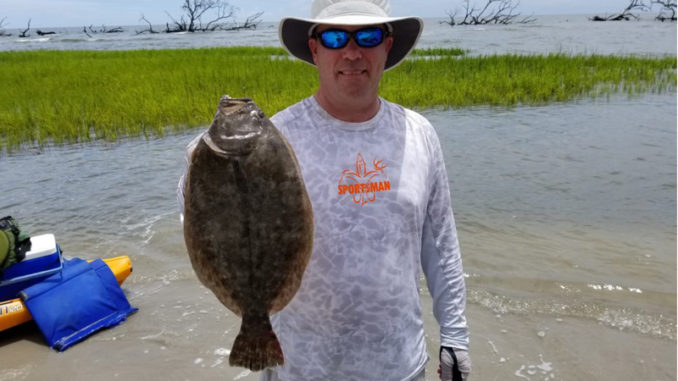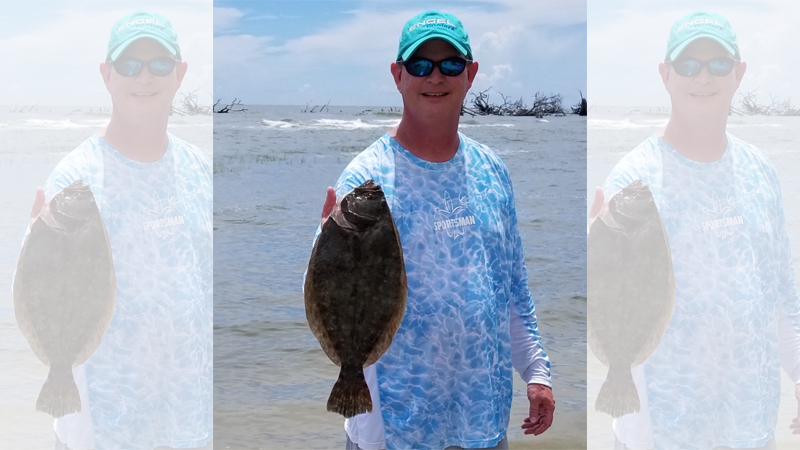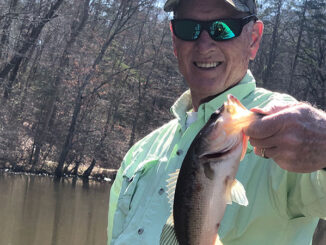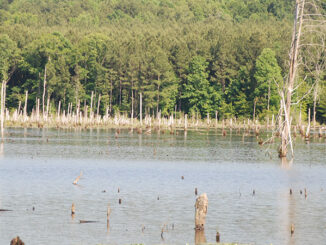
Hurricanes, flooding from past years have changed many Carolina inshore creeks
The coastal inlets and creeks of the Carolinas have taken a beating from hurricanes and flooding over the past few years. Some creeks have been changed drastically. Even to the point that many anglers who once enjoyed fishing success in those creeks have abandoned them completely and consider them ruined.
But in some cases, the fishing in those creeks is better than ever. But the anglers must adjust the way they fish them. An added bonus is that many anglers don’t consider fishing them any longer. So those who do try their hand at them usually have little or no competition from other anglers.
One of the biggest changes facing these creeks is that while they once had a left bank and a right bank no matter what the tide was, they now only have one bank at high tide. The other bank is either breached and covered with incoming water by the open ocean, or by the biggest inlet nearest the creek.
These creeks were once protected from the tide and surf. But they are now exposed to it at high tide. Waves crash in these areas that were once relatively calm on both tide cycles.
Crashing waves carry baitfish in
And that’s the key. When the waves crash in, they carry baitfish in and push it all against the creek’s remaining bank. The redfish, flounder, and trout stack up, waiting on easy pickings. And that’s where anglers can find easy pickings too.
One of the best ways to fish these areas is with a kayak. That’s also one of the only options in many cases. Some of these creeks are inaccessible at low tide by bigger fishing boats.

Most anglers use a Carolina rig with an egg sinker, a 3/0 hook, and 20-pound fluorocarbon leader. They tie that leader under a swivel tied to 20-pound braided mainline. They spool that onto a 2500-series spinning reel and a medium power rod. Kayak anglers can simply place their rod in a rod holder, then drift with the current, only paddling enough to stay out of trouble from the incoming waves.
A biting fish will double your rod over, the circle hook will do its job, and then the fun begins. It’s time to set the paddle down and remove the rod from the rod holder. Then it’s time to fight the fish. And you’re now subject to the mercy of the waves, which can crash over your kayak or push you into — and sometimes on top of — the bank, where you’re prone to the next wave pounding into or over you.
Catching fish this way is challenging and fun
It can get hairy, and that’s part of the fun. Once, while dangling my legs in the water and fighting to bring a 22-inch redfish on board, a wave picked up my kayak and set it down on top of the grass-lined bank. The next wave turned my kayak onto its side as I left the watercraft completely. My dangling feet found enough support on the bank to stand on for just long enough to right my kayak and plop down into the seat. I landed the fish. But I lost my favorite pair of Danco fishing pliers, which was the only thing not strapped or bungeed to the kayak. Lesson learned.
Fishing several different creeks like this in both Carolinas, we’ve found they all fish the same on the incoming tide. As soon as the tide begins pushing water onto that opposite bank, the bite is fast and furious. Once the tide is completely high and the water levels out, the baitfish and gamefish all break up and are harder to find.
The redfish seem to be the thickest in these areas, but we will pick up a trout here and there. And the flounder come plenty often, especially if you’re using a bit of a heavier sinker. I like to stick with 1/2-ounce to 3/4-ounce, but I’ve had to resort to a 1-ounce or even 1 1/2-ounce when quickly retying after a break off. I’ve picked up most of my flounder then.
So next time you hear someone talk about a creek that’s been ruined or breached by storms, pay close attention. And instead of writing it off as a lost cause, make that your next fishing destination. And if you happen across a pair of blue pliers with my name engraved, you know where to find me.
Click here to read the dates and details of North Carolina’s 2020 flounder fishing season.




